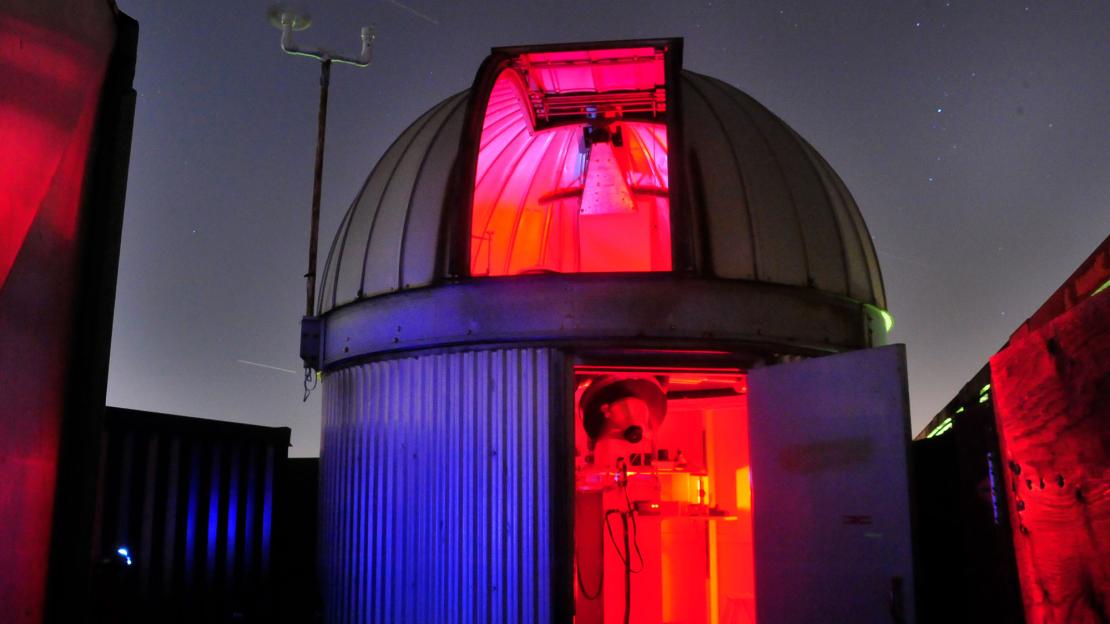On October 4, 2016, around the time the Toronto Blue Jays were winning an historic playoff game with a walk-off home-run against the Baltimore Orioles, a bright fireball streaked across the night sky.
The meteor, which lit up areas of Southern Ontario and prompted many calls to 911, was captured by the UTSC Observatory web cam. Capturing the fireball on camera was more the result of good fortune than careful planning, says Assistant Professor Hanno Rein, who manages the observatory. Since the camera is trained over the Highland Creek Valley, it only covers a small portion of the sky.
“We received media attention since it was a bright fireball, but also because many people, including those at the baseball game, saw it as well,” says Rein, a researcher at the Centre for Planetary Science.
Now thanks to a project being run by Western University, capturing meteors on camera at UTSC may get a little easier. Called the All-Sky Camera Network, the project involves 19 video systems set up across southern Ontario designed to automatically detect bright meteors as they burn up in the earth’s atmosphere.
The camera at UTSC, like the others involved in the project, uses a fisheye lens to cover the entire sky and is connected to computer that is constantly monitoring the feed. The advantage of the system is that it’s not only constantly monitoring the entire night sky, it’s also analyzing data to figure out patterns that may look like a meteor.
The broader goal is to gather data to help with research measuring the frequency of smaller meteors. While large asteroids are fairly easy to track as they orbit our solar system, smaller ones cannot be detected before they hit earth. The hope, says Rein, is to narrow the gap in monitoring between large and very small meteors in order to better track the medium sized meteors that can still cause damage when they collide with earth.
Rein hopes the data collected by the camera can also be used by undergraduates in a future course on practical astronomy. He adds the benefits of having a meteor camera on campus also extend beyond merely collecting reliable data.
“If you live in the area and want to know whether that bright object you saw in the sky was a meteor or not, you can check our Twitter feed and see a video of it within the minute,” he says.
